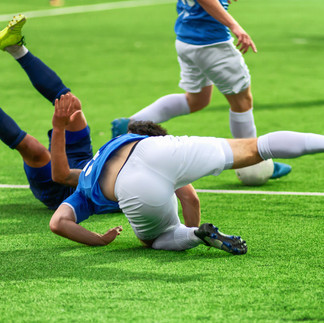Joint Instability: Physio or Surgery?
- steph0617
- Jun 4, 2024
- 3 min read
We are well and truly into our Winter Sports seasons and our team are starting to see a growing number of joint instability injuries. Think of the torn ligaments, dreaded ACL rupture or shoulder dislocation.
Joint instability refers to an injury to the tissues of the joint, causing it to become unstable or change normal alignment. This can result in pain, stiffness, dislocations and episodes of giving way or weakness in the joint.
As an athlete, it can be incredibly daunting when suffering one of these injuries and not knowing where to start with treatment. Some people will head straight to their physios, whilst others will go to their GP and perhaps be sent on for a surgical opinion.
Which one is the correct option? The answer is actually BOTH.
When it comes to treating joint instability, there is no cookie cutter approach.
Your trusted Health Professional will need to consider a number of factors that will determine which course of treatment may be the most appropriate for you.
Most importantly, it needs to be a joint decision-making process between you and your treating health professionals.
For example, think of an athlete who has just dislocated their shoulder for the first time. There is a common assumption that if it is the first dislocation that you can just “pop it back in” and it will be okay. Unfortunately, it is not as simple as this.
For some people, it is perfectly reasonable for this to be rehabbed non-surgically (with a physio). For some people, however, it is important to get a surgical opinion, even though it is their first dislocation.
How do you know when to go get a surgical opinion and when to trial non-surgical management first?
Well, that depends on a comprehensive risk analysis that will need to be done by the treating practitioner.
Firstly, someone’s age and level of skeletal maturity plays a big part.
If they are under 20 years old and it is their first dislocation, they will have a higher risk of re-dislocating it again compared to someone who is skeletally mature.
Secondly, it is important to look at how lax or tight their joint actually is. How apprehensive are they with using their shoulder and is there any abnormal muscle patterning going on?
Thirdly, for any dislocation or pivoting knee injury, it is important to get imaging done to determine if there is any structural damage that may need to be considered. For example, sometimes a piece of bone can be broken with a shoulder dislocation.
Lastly, what sport they play, where they are in their season and career, their level of support also play a huge role in deciding what course of treatment is appropriate for them.
So, in summary, there is no one path that works best for everyone.
This is a unique journey for each individual, and it is important that you recognise the aspects of your journey that will guide these decisions.
It MUST be a joint decision making process, discussing the pros and cons of each choice.
It is important that you have a knowledgeable physio in your corner, regardless of which path is for you.
We want you to get back to 110%! We strive to return you to sport, return the joy to your life, and put in place strategies and work to prevent this happening to you again.
The most important thing is that we work with you to determine what the best course if treatment for YOU as a person and not just a body part.
This journey looks different for everyone, but we are here to walk it with you.






















Sports is important, but games are so much fun, but I hear you—it can be tough to find one that actually works for you. Starda Casino is one of the more solid options out there. Check out this review for more details: https://casinoonlineca.ca/casino/starda-casino/ . It might be just what you’re looking for!